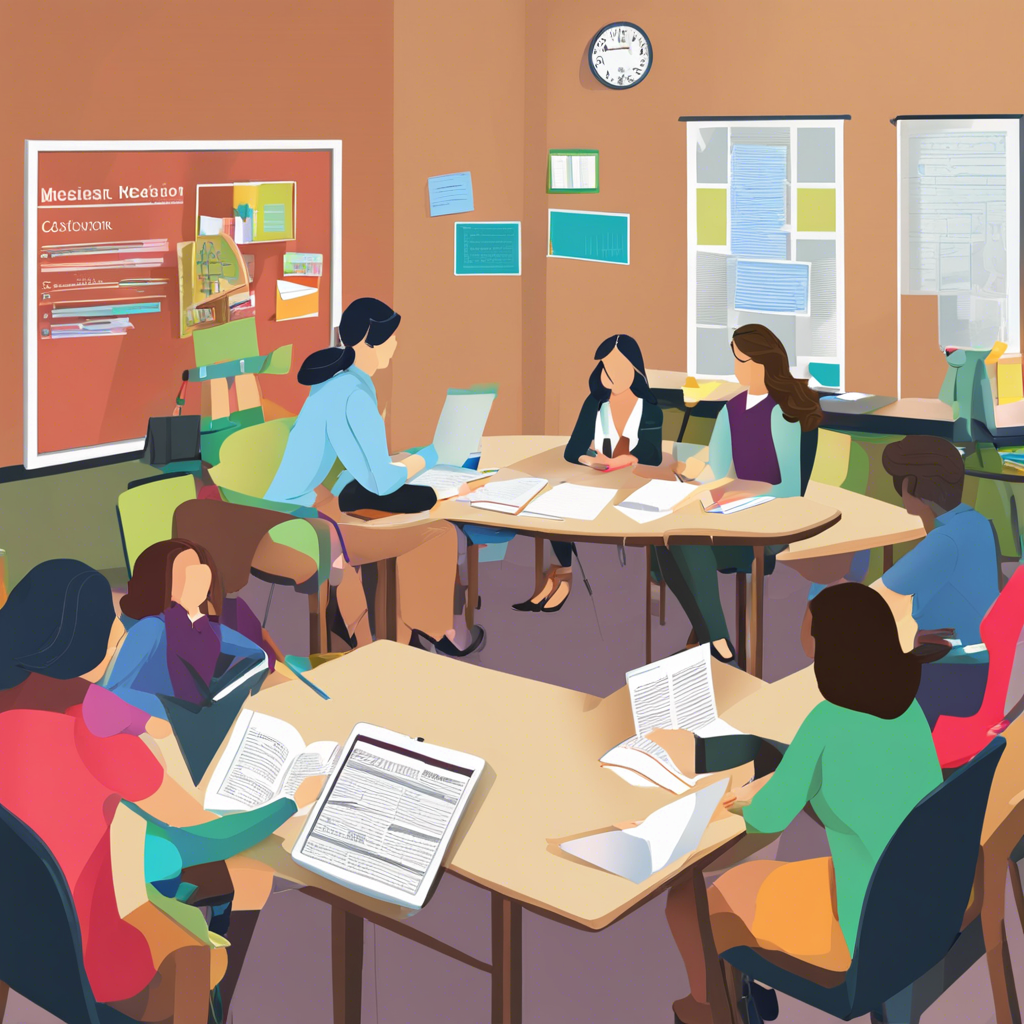Exploring the impact of teacher collaboration on professional growth and student achievement.
Teacher collaboration is a powerful tool for educators to enhance their practice and improve student outcomes. When teachers work together, they can achieve more than they could alone. This article delves into the role of teacher collaboration in professional development, examining its benefits and strategies for implementation, and ultimately, its impact on student success.
In today’s education landscape, the concept of collaborative teaching has gained significant traction. It is not merely a trend but a proven approach to fostering a culture of continuous learning and improvement among educators. By sharing ideas, resources, and best practices, teachers can elevate their teaching methods and create a more inclusive and effective learning environment.
Let’s explore how teacher collaboration serves as a catalyst for professional development and its positive influence on student learning.
## The Power of Collaboration
Fostering a Learning Community
Collaboration among teachers is a cornerstone of effective professional development. It creates a supportive learning environment where educators can collectively enhance their skills and knowledge. When teachers collaborate, they build a community of learners, sharing insights and experiences that contribute to their professional growth.
Research suggests that teacher collaboration has a positive impact on student achievement. A study by the National Comprehensive Center for Teacher Quality (2009) found that students in schools with high levels of teacher collaboration outperformed their peers in schools where collaboration was limited. This highlights the potential benefits of fostering a collaborative culture in education.
## Strategies for Effective Collaboration
Structured Collaboration Time
Implementing dedicated time for teacher collaboration is essential. This can take the form of regular meetings, workshops, or online forums. During these sessions, teachers can discuss teaching strategies, share resources, and analyze student data. Such structured collaboration fosters a sense of community and ensures that professional development is integrated into daily practice.
One successful example of structured collaboration is the Professional Learning Communities (PLCs) approach. PLCs provide a framework for teachers to work together, setting goals, implementing strategies, and reflecting on outcomes. This model encourages a continuous cycle of improvement and learning.
Digital Tools for Collaboration
In today’s digital age, utilizing technology can enhance collaboration. Online platforms and tools enable teachers to connect and share resources remotely, transcending geographical barriers. Collaborative platforms like Google Workspace or Microsoft 365 offer features such as shared documents, video conferencing, and cloud storage, making it easier for educators to work together.
Additionally, social media platforms like Twitter and LinkedIn provide opportunities for teachers to connect with peers globally, sharing best practices and accessing a wealth of educational resources. These digital tools can facilitate collaboration and professional growth, ensuring teachers are equipped with the latest educational strategies and trends.
## Benefits of Collaboration
Improved Teaching Practices
Collaboration allows teachers to learn from each other’s strengths and experiences. By sharing effective teaching strategies and resources, educators can enhance their instructional practices. This collaborative approach fosters a culture of continuous improvement, where teachers are continually refining their skills to better support their students.
Enhanced Student Learning
The impact of teacher collaboration extends beyond the professional development of educators. When teachers collaborate effectively, students benefit from a more engaging and cohesive learning environment. This collaborative approach ensures that students receive consistent support and guidance, regardless of the teacher they interact with.
Research has shown that students in collaborative learning environments tend to develop stronger problem-solving skills, critical thinking abilities, and a more positive attitude towards learning. This is because collaborative teaching encourages active engagement, peer-to-peer learning, and the application of knowledge in real-world contexts.
Benefits for Students:
- Consistent support and guidance.
- Enhanced problem-solving and critical thinking skills.
- A positive and engaging learning environment.
## Q&A: Addressing Common Questions
How can teachers effectively collaborate with busy schedules?
Effective collaboration doesn’t always require large blocks of time. Short, frequent meetings or online discussions can be just as beneficial. Using digital tools for asynchronous collaboration can also help manage busy schedules.
What are some tips for successful collaboration?
Set clear goals, establish trust, and encourage open communication. Create a safe and supportive environment where teachers feel comfortable sharing ideas and resources.
How can school leaders support teacher collaboration?
School leaders can play a pivotal role in promoting collaboration by providing resources, ensuring dedicated time for collaboration, and fostering a culture of mutual support and learning.
## Conclusion
Teacher collaboration is a powerful catalyst for professional development and student success. By fostering a collaborative culture, educators can enhance their teaching practices, and students can benefit from a more cohesive and engaging learning environment. Through structured collaboration, digital tools, and a shared commitment to growth, teachers can make a lasting impact on their students’ education.
## External Links:
1. Implementing Professional Learning Communities
2. Creating High-Quality Professional Development
3. Building Teacher Collaboration
